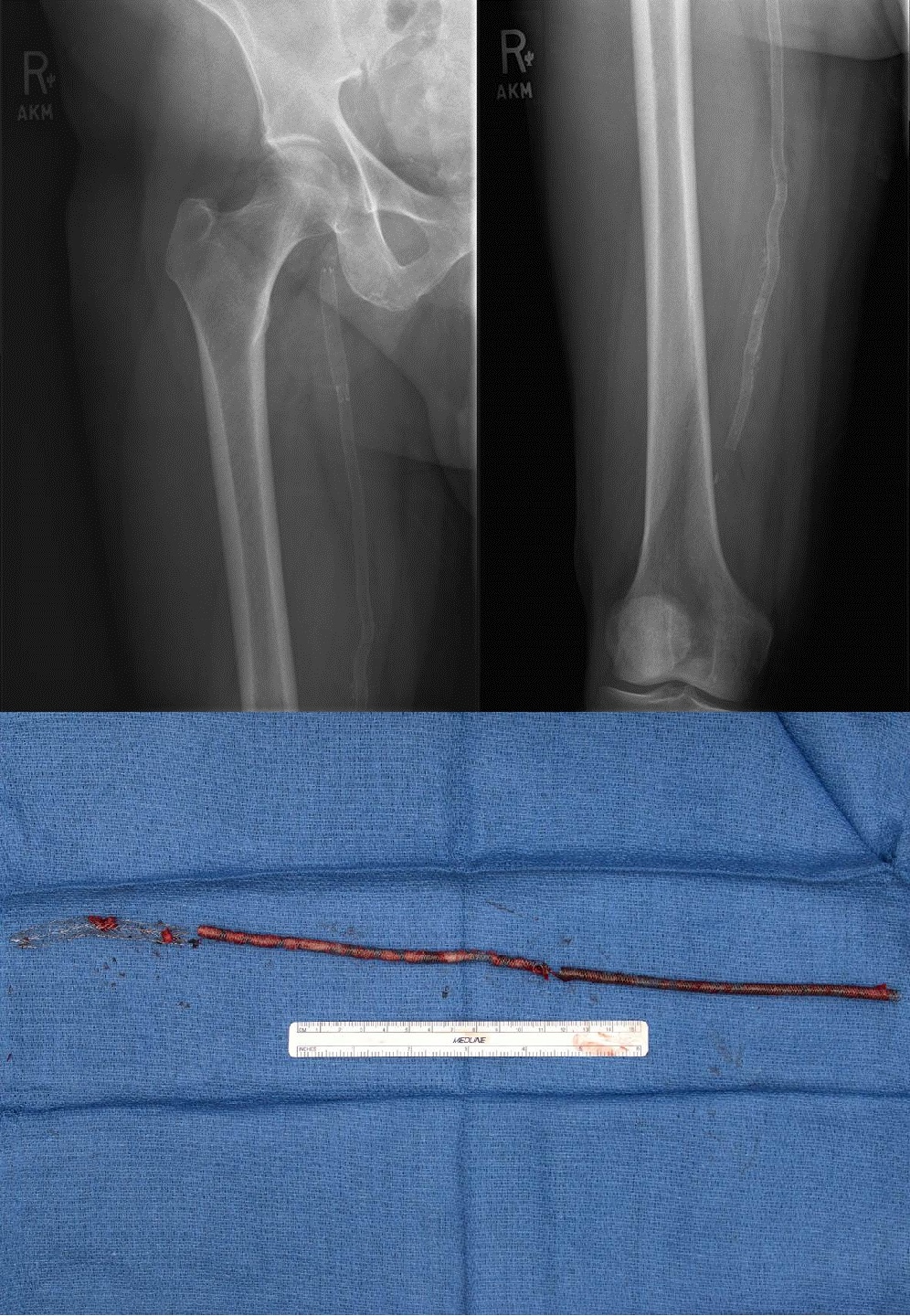Nickel Allergy in a Patient with Claudication
James M. Chang, MD, Victor J. Davila, MD, Ryan W. Day, MD, Samuel Money, MD.
Mayo Clinic Arizona, Phoenix, AZ, USA.
OBJECTIVES: Nickel allergies are common, however patients have few manifestations despite its use in many alloys. We present the case of a patient with an allergic reaction to nitinol stents, the diagnosis, workup and treatment.
METHODS: This is a case report and review of the literature.
RESULTS: A 57-year old male presented reporting a history of right lower extremity claudication treated at an outside facility by placement of three self-expanding nitinol stents in the superficial femoral artery (SFA). He began having diffuse "hives" and was evaluated by an allergist and found to have a severe nickel allergy. The stent manufacturer provided a sample nitinol stent for further testing to which the patient also presented a macular erythematous reaction. The patient was determined to have a significant reaction to the nitinol stents and removal was necessary.
The patient was taken to the operating room for an above-knee femoral popliteal artery bypass with polytetrafluoroethylene (PTFE) graft, and explantation of three stents in the SFA. An 8-mm PTFE graft was used to bypass the SFA, from common femoral (CFA) to popliteal artery. The SFA was ligated, proximal and distal to the SFA stents.
The CFA dissection was continued onto the SFA and arteriotomies were made sequentially, removing the stents whole. Post-removal plain radiographs showed complete device removal. His allergic symptoms had resolved by his post-operative visit on postoperative day 10. At his two month follow-up visit his bypass was patent and the patient had no recurrence of his symptoms.
CONCLUSIONS: Nickel allergy is a common phenomenon with nearly 16.2% of people in North America having a reaction. Despite this prevalence, this incidence of adverse reactions to medical devices containing nickel is relatively rare. We present a case report, workup, and management strategy. Case reports of reactions to nickel are disparate, and the clinical presentations varied. Preoperative testing may be a useful adjunct in patients with a positive history. Treatment for allergy may be medical immunosuppression therapy or surgical device explantation dependent on the patient's symptoms, the device, and their perioperative risk of surgery.

Back to 2017 ePosters




